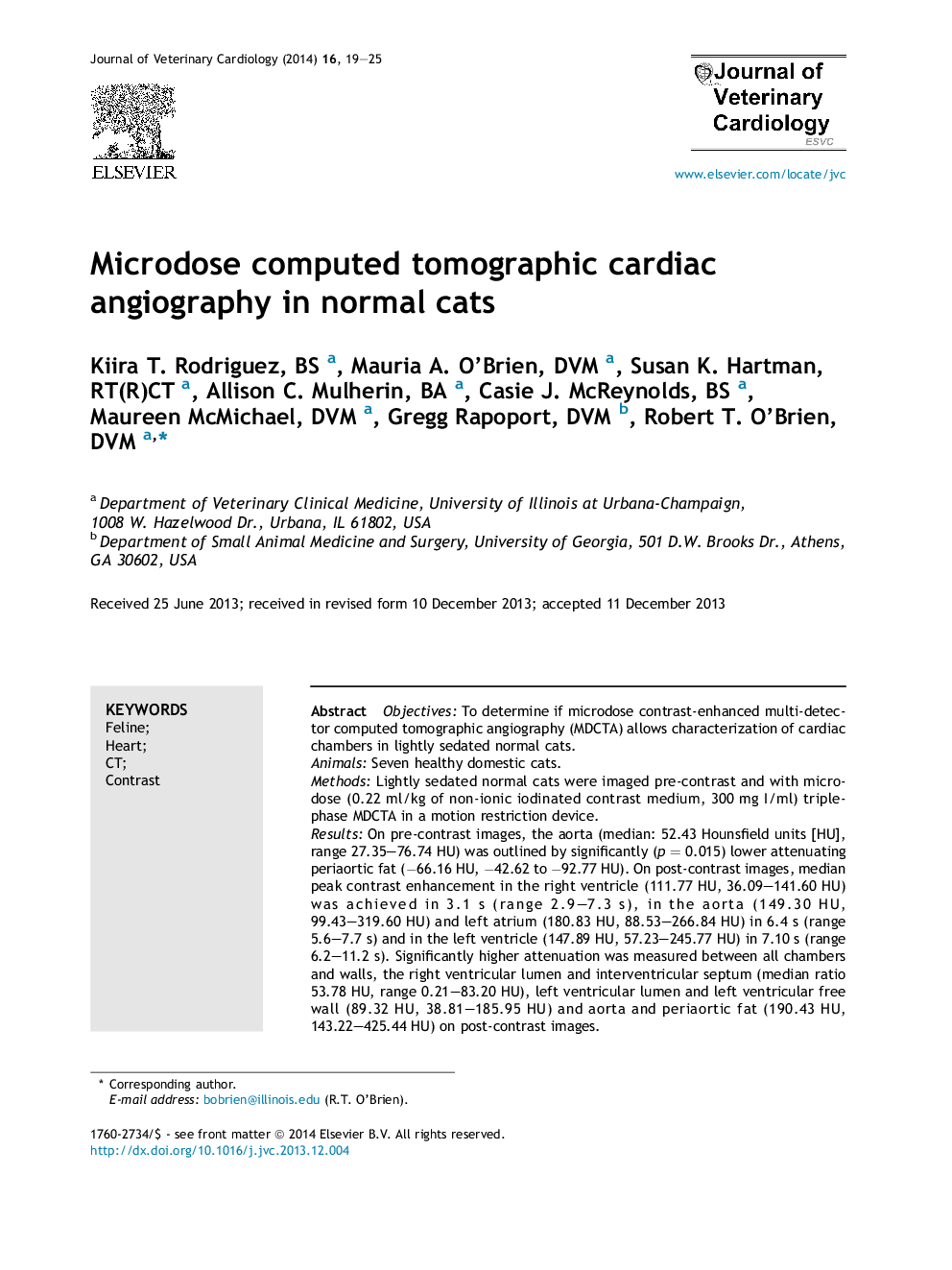| Article ID | Journal | Published Year | Pages | File Type |
|---|---|---|---|---|
| 2400179 | Journal of Veterinary Cardiology | 2014 | 7 Pages |
ObjectivesTo determine if microdose contrast-enhanced multi-detector computed tomographic angiography (MDCTA) allows characterization of cardiac chambers in lightly sedated normal cats.AnimalsSeven healthy domestic cats.MethodsLightly sedated normal cats were imaged pre-contrast and with microdose (0.22 ml/kg of non-ionic iodinated contrast medium, 300 mg I/ml) triple-phase MDCTA in a motion restriction device.ResultsOn pre-contrast images, the aorta (median: 52.43 Hounsfield units [HU], range 27.35–76.74 HU) was outlined by significantly (p = 0.015) lower attenuating periaortic fat (−66.16 HU, −42.62 to −92.77 HU). On post-contrast images, median peak contrast enhancement in the right ventricle (111.77 HU, 36.09–141.60 HU) was achieved in 3.1 s (range 2.9–7.3 s), in the aorta (149.30 HU, 99.43–319.60 HU) and left atrium (180.83 HU, 88.53–266.84 HU) in 6.4 s (range 5.6–7.7 s) and in the left ventricle (147.89 HU, 57.23–245.77 HU) in 7.10 s (range 6.2–11.2 s). Significantly higher attenuation was measured between all chambers and walls, the right ventricular lumen and interventricular septum (median ratio 53.78 HU, range 0.21–83.20 HU), left ventricular lumen and left ventricular free wall (89.32 HU, 38.81–185.95 HU) and aorta and periaortic fat (190.43 HU, 143.22–425.44 HU) on post-contrast images.ConclusionsSufficient biological contrast is available on survey CT to discriminate between the aorta and the left atrium, and microdose MDCTA provides sufficient contrast enhancement for adequate visualization of the heart chambers in normal cats.
